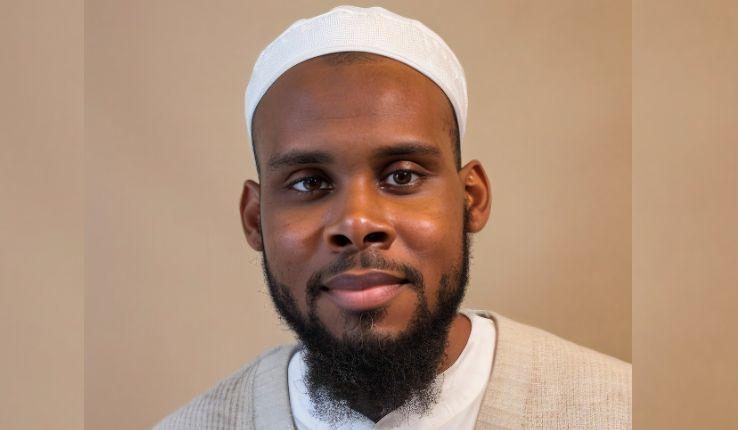Lehigh to expand gender violence discussion to include influence of pornography

"Popcorn and Porn: A Critical Analysis of the Role Pornography Plays in Sexuality Education and Gender Violence” debuted in late March to a group of students active in advocacy and equity issues on campus.
Students at Lehigh were recently part of a pilot program to look at the role pornography plays in shaping sexual beliefs and behaviors. The one-hour workshop examined the growing body of research that suggests that aggressive behavior against women can be connected to behavior often depicted in professional and amateur pornography that is viewed by children as young as 8 years old, with no space to question or process what they’re viewing.
“Often people use pornography as a form of sex education,” said Brooke DeSipio, director of Lehigh’s Office of Gender Violence Education and Support. “And unfortunately, pornography can become the sole source of sex education that often shapes ideas about sexuality and human sexual behavior. This becomes concerning when certain types of pornography that depict violence and spread misinformation become the main source of sexuality education.”
As the result of requests from several student groups to expand on-campus discussions to include the influence of pornography, DeSipio and graduate assistant Dana Gallant created a template for guiding these discussions.
"Popcorn and Porn: A Critical Analysis of the Role Pornography Plays in Sexuality Education and Gender Violence” debuted in late March to a group of students active in advocacy and equity issues on campus, as well as in partnering clubs and organizations. More than 60 students attended the workshop, and DeSipio said that evaluations collected at the conclusion of the event indicated that students benefited from the candid discussions and are interested in deeper analysis of the issues raised.
“The students have been asking for these discussions for a while,” she said. “They want to expand it to include a critical review of how women of color and varying ethnic backgrounds, as well as various gender identities and sexual orientations, are typically depicted and treated in these venues, and what kinds of messages that sends.”
DeSipio said the discussion employed media literacy theory to have students view short clips and then analyze and critique the depicted behaviors and the underlying themes. Critical to the discussion, she said, is the realization that the viewing of pornography is often not done in a group setting—where social norms come into play—but on individual devices and is so taboo that it is never talked about or discussed. As a result, there is no “social learning theory” that would suggest that certain behaviors are offensive, violent, or even criminal.
Promoting healthy and consensual behavior
In all of her office’s work, DeSipio said, “we promote healthy, consensual behavior. So sometimes, the behavior depicted in pornography—particularly in the ‘anything goes’ amateur pornography that is so prevalent—is the opposite of that. It can be violent and aggressive, and anything but healthy and positive.”
Concern about these behaviors isn’t limited to pornography, she said. Such behaviors are often depicted in various forms of popular culture including music, television and film, and can clearly can have an impact on individual perceptions of sexuality and gender identity.
All the more reason, says Gallant, to open these discussions.
“Campus and national surveys indicate students are consuming pornography on a large scale and on a regular basis,” she said. “Their ideas about sex are being shaped by pornography, including consent and violence,and permeating real world behaviors. Despite how regularly it is being viewed, there was nowhere for students to have an honest dialogue about it or talk about the myths it perpetuates. Hopefully, students will be able to think more critically about the media they view and the often unrealistic and dangerous expectations pornography normalizes.”
Gallant, who has been involved in advocacy since her time as an undergraduate at Lehigh and her work with the Women’s Center, said that the students who attended the event had a very positive reaction, and several approached her after the event to discuss getting more involved, including joining the Break the Silence peer educator group that addresses gender violence.
Rachel Sholder ’16, a mathematics major who also serves as a Peer Health Adviser and interned in the university’s Office of Health Advancement and Prevention Strategies, was eager to be a part of the discussion, and noted that there were more females who participated in the discussions than males.
“I think this further proves the belief that men watch pornography more frequently than women,” she said. “But overall, I think the presenters did a great job framing the discussion. I think attendees might have been a bit hesitant to participate the first time out, but I think more honest and candid discussion would come with time.”
Stephen Friedman, a computer science and business major and Phi Kappa Theta fraternity member, was one of the attendees at the pilot session, and felt that he and others benefited from an emphasis on consent as part of healthy sexuality. He was also surprised—and grateful—that the university took on such a controversial topic.
“This event allowed for open conversation on the topic of sex between varying types of students,” he said. “If anything, just creating a time and space for Lehigh students to discuss sex will help to break down the tall wall of ‘taboo’ that surrounds the free conversation of the topic.”
Posted on:




